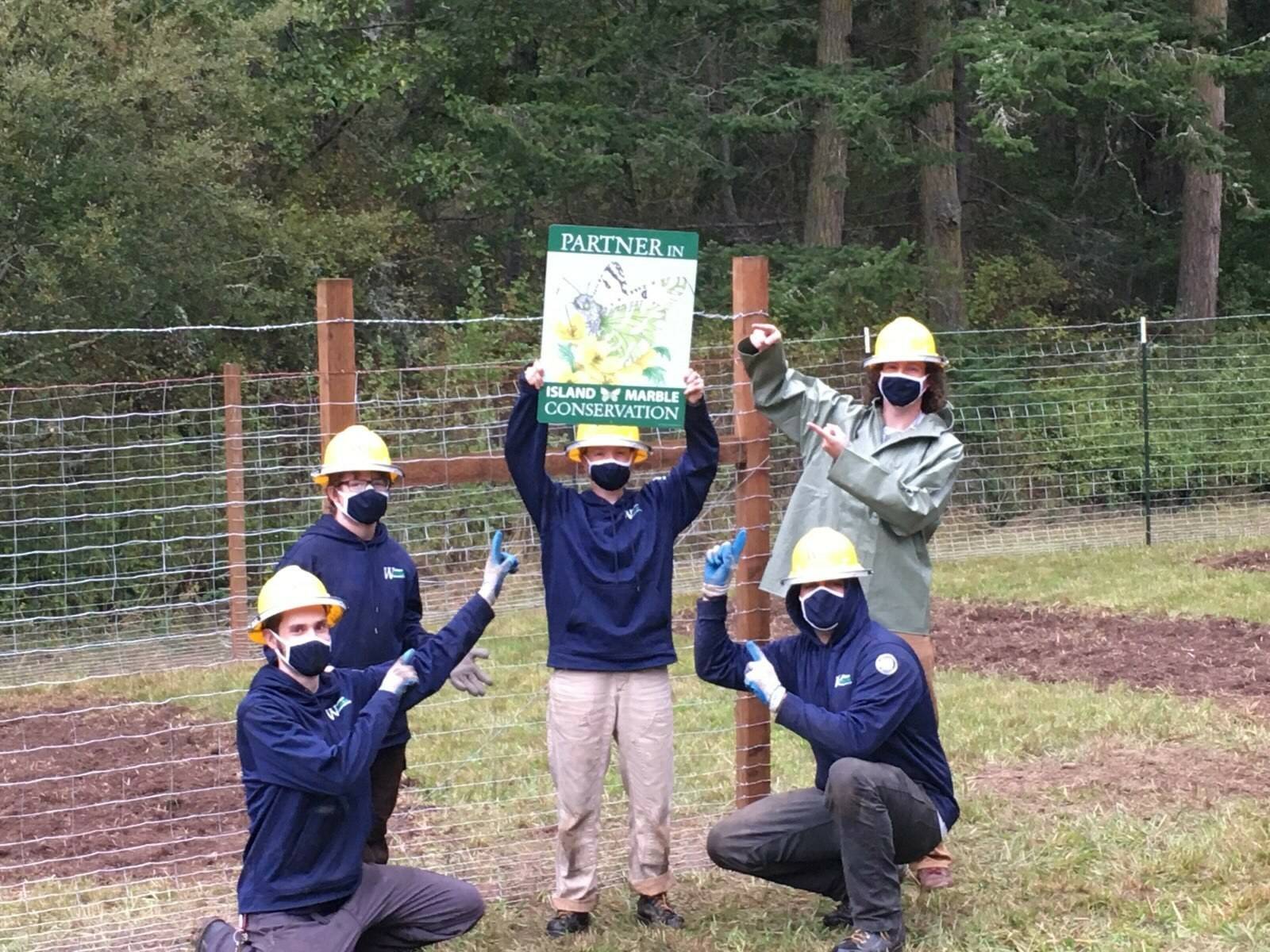San Juan County landowners recently added seven new protected habitat sites for the Endangered Species Act-listed Island Marble butterfly. The Island Marble is one of the rarest butterfly species in the world, with only 200-500 individuals known to be living, and its range limited exclusively to the southern end of San Juan Island. USFWS Endangered Species Biologist and Orcas Island resident Adam Griesemer said, “the island marble butterfly is at significant risk of extinction due to ongoing threats to the species’ single, small known population that have contributed to the decline of butterfly populations and habitat over the past two decades.”
The dedication of protected land from these seven landowners provides an additional 20,000 square feet of fenced habitat and 70 acres of open land protected from forest encroachment. Roughly twenty other habitat plots on San Juan Island are already available and helping the butterflies continue their fight to survive.
New plots will be planted with a brassica seed intended to flower bright yellow throughout spring and summer, attracting migrating butterflies across a broader range. The Brassica rapa (field mustard) is known to support the butterfly throughout their entire lifecycle. The plots range in size from 100 to 5,000 square feet and are located on both San Juan and Lopez islands. Deer fencing of the perimeter helps ensure host plants and butterfly eggs, larvae, and chrysalises do not fall victim to deer foraging or human intrusion.
Thought to be extinct for over 90 years, Island Marble Butterflies were observed in the late 1990s on San Juan Island and shortly after on Lopez Island. Since then, their numbers and habitat have continued to dwindle and no populations have been observed on Lopez since the early 2010s. By building new plots on Lopez at this time, project managers hope to establish the habitat needed for the survival of a future population. The Island Marble’s range used to include the San Juan, Gulf, and Vancouver Islands.
Facilitating both survival and migration, plots have been located along what biologists believe will be typical flight patterns. The bright ribbons of yellow brassica flowers are a signal of safe harbor and survivability for the butterflies. Plots will be maintained in partnership by the landowners and the San Juan Island Conservation District’s Youth Conservation Corps over the next ten years. Funding comes from the US Fish and Wildlife Service Partners for Fish and Wildlife program. Monitoring is being conducted by the Washington Department of Fish and Wildlife.
For more information on the Island Marble butterfly or to get involved, please visit www.sanjuanislandscd.org/island-marble-butterfly.



